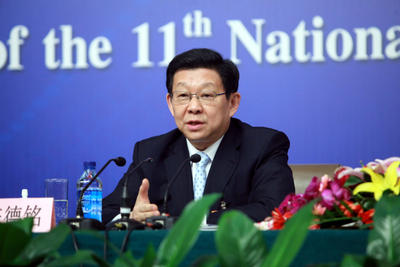China is the world’s largest exporter of rare earths, and has been regulating its supply since 2008. Since then it has introduced measures including high export taxes and, in the case of some products, has prohibited trade altogether. Earlier, in 2007, China withdrew the 16 per cent refund of value-added tax on exports of unimproved rare earths. The effect of this decision, combined with the export-tax regime, is that non-Chinese rare earth processors, such as producers of cerium polishing powder and rare earth magnets, pay 31 per cent more for rare earth raw materials than their Chinese counterparts.
A request for consultations with the Chinese government is the first step in the WTO dispute settlement process. If, as is likely, the parties to the dispute are unable to reach a resolution after 60 days of talks, the US, the EU and Japan will have the right to request that a WTO panel be established to hear the complaint. As it is very likely that the parties will not reach an agreement the process could lead to sanctions against China.
The complaints follow the WTO Appellate Body’s January ruling that by restricting the exports of nine other raw materials including zinc, coke and magnesium, Beijing was in violation of both WTO law and the country’s obligations under the Protocol on the Accession of the People’s Republic of China. The Appellate Body concluded that there was no basis for general exceptions to apply to Paragraph 11.3 of the Accession Protocol, which requires China to eliminate all taxes and charges applied to exports. Since the ruling, China has reportedly been increasing the supply of zinc, coke and magnesium, but not of rare earths.
In the present case, the complainants claim China is placing a range of export restraints on various rare earths and non-rare earths including export duties, export quotas, export licensing, and minimum export-price requirements. The US, the EU and Japan are also challenging aspects of the allocation and administration of export quotas, export licences and minimum export prices, and the alleged non-publication of certain measures. They further contend that the Chinese measures aim to satisfy domestic demand first, and control the international price of minerals, in violation of WTO law.
The measures appear to be inconsistent with various provisions of the GATT and the Accession Protocol, among other obligations. The most important provision on export restrictions is Article XI of the GATT, which prohibits quantitative restrictions. But export duties are not, in principle, prohibited under this article. Regarding quantitative restrictions, which are generally prohibited, the issue is whether China’s measures fit into a relevant GATT exception.
In both cases, China insists that its export restrictions fit within a legal exception to WTO rules, because its measures aim to protect the environment. In the January ruling, the WTO decided that price and quantity controls primarily targeting foreign entities were not a reasonable implementation of a conservation policy. China’s argument is unlikely to be more successful this time around. Article XX of the GATT, which lays out general exceptions to WTO law, allows trade restricting measures for the purpose of environmental conservation, but only if such measures apply in conjunction with restraints on domestic production or consumption. China has not placed restrictions on these activities domestically, and its argument is further weakened by the fact that regulating production — not trade — is the best option for the purposes of conservation and environmental protection.
China has already started negotiating with its counterparts. In particular, it has been advocating that more US, European and Japanese companies team up with local firms on rare-earth technology ventures. Environmentally friendly projects in areas like environmental management, recycling, and research and development of high-end applications have received considerable attention in recent times, but these proposals are unlikely to resolve the problems at the core of the dispute.
Despite the significance of China’s actions, most analysts argue that the shortage of rare earths will be a temporary phenomenon, because the rising prices for rare earth elements will encourage others to enter the market, leading to increased supply. The US, for example, has 13 per cent of the world’s known rare-earth reserves, and could re-enter the production and refining business. China’s efforts to exert price leverage are unintentionally driving a revival of global rare earths production and, over time, China will likely be just one of many global suppliers. China’s efforts to monopolise the sector are bound to backfire because such high-handed measures have prompted the rest of the world to formulate alternate strategies.
At the same time, businesses and policy makers around the world alike are concerned about the increasingly restrictive and unpredictable environment of international trade in industrial raw materials. Multilateral disciplines governing export restrictions are ambiguous, which creates uncertainty for industries that require these materials and raises the risk for investment in both mining and processing facilities worldwide.
Nabeel A. Mancheri is a Postdoctoral Associate at the National Institute of Advanced Studies, Bangalore.

